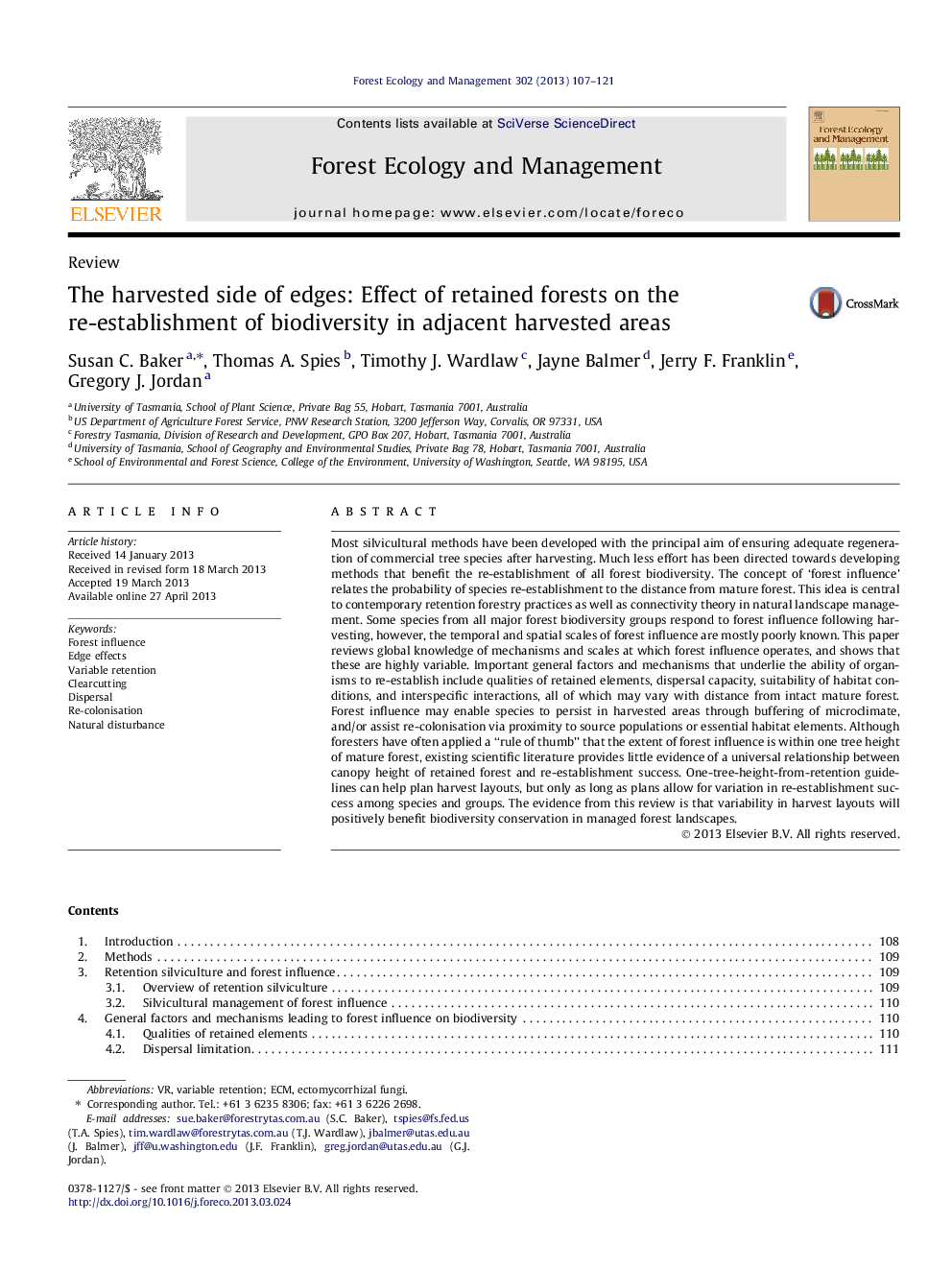| کد مقاله | کد نشریه | سال انتشار | مقاله انگلیسی | نسخه تمام متن |
|---|---|---|---|---|
| 87060 | 159230 | 2013 | 15 صفحه PDF | دانلود رایگان |

• Mature forest proximity affects re-establishment of biodiversity after logging.
• All biodiversity groups are affected, but scales and mechanisms vary.
• Scale of re-establishment varies with dispersal capacity and habitat gradients.
• Height of retained forest is rarely directly scaled to distance of re-establishment.
• Harvest layouts should promote mature forest proximity to functional refugia.
Most silvicultural methods have been developed with the principal aim of ensuring adequate regeneration of commercial tree species after harvesting. Much less effort has been directed towards developing methods that benefit the re-establishment of all forest biodiversity. The concept of ‘forest influence’ relates the probability of species re-establishment to the distance from mature forest. This idea is central to contemporary retention forestry practices as well as connectivity theory in natural landscape management. Some species from all major forest biodiversity groups respond to forest influence following harvesting, however, the temporal and spatial scales of forest influence are mostly poorly known. This paper reviews global knowledge of mechanisms and scales at which forest influence operates, and shows that these are highly variable. Important general factors and mechanisms that underlie the ability of organisms to re-establish include qualities of retained elements, dispersal capacity, suitability of habitat conditions, and interspecific interactions, all of which may vary with distance from intact mature forest. Forest influence may enable species to persist in harvested areas through buffering of microclimate, and/or assist re-colonisation via proximity to source populations or essential habitat elements. Although foresters have often applied a “rule of thumb” that the extent of forest influence is within one tree height of mature forest, existing scientific literature provides little evidence of a universal relationship between canopy height of retained forest and re-establishment success. One-tree-height-from-retention guidelines can help plan harvest layouts, but only as long as plans allow for variation in re-establishment success among species and groups. The evidence from this review is that variability in harvest layouts will positively benefit biodiversity conservation in managed forest landscapes.
Journal: Forest Ecology and Management - Volume 302, 15 August 2013, Pages 107–121